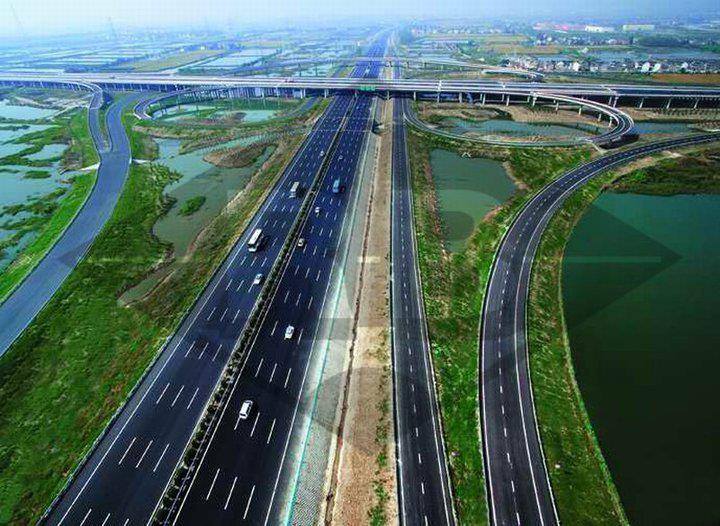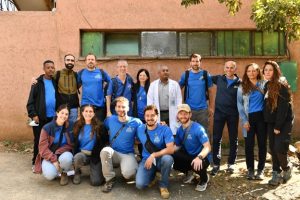
According to government sources, Ethiopia has made huge investment in the development of roads to connect rural and urban centers as well as hinterland to neighboring countries. In the space of the last 15 years the government has allocated about 12.2 billion USD. However, despite such investment, some argue that Ethiopia’s rural transport has still remained low and gaps are evidenced.
As the main roads are far from the scattered settlements, the destitute are still barred from the modern transport service .As such they use human and animal labor as a means of transportation.
Naod Mekonene is an economist working as a private consultant. As to him, road transport is a major means of transportation in the country which serves for about 90 percent of motorized inter urban – rural and foreign destiny freight and passenger movements.
He further said that, as Ethiopia is a landlocked country and navigable rivers are not there, the role of road transportation is vital both for domestic and international transport services.
It is understood that, 85 percent of the population reside in the rural parts engaged in agriculture. This indicates how road transportation has a potential demand which attract enormous investment. In addition the expansion of road paves way for the emergence of other infrastructures such as education health, energy and telephone facilities that could change the livelihood of the rural population to the better.
Currently, asphalt and gravel roads constitute only 15301 km which is 15 percent of the total network. This is relatively very small area compared to the nation 1.1 million square kilometer landmass and the approximately 105 million populations. This clearly shows that there is a lot to be done to meet the growing population demand in attaining socioeconomic progress.
According to the recent Ethiopian Road Authority’s report, in the rural parts of the country 40.5 percent of the area is 5 kilo meter far from the main road. As the result, close to 70 percent of the rural population still needs to travel about 6 hours to reach to all-weather roads.
Most rural roads are dry weather roads inconvenient for the movement of vehicles in the wet season .This hampers the sector activities.
The proportion of rural population with in the radius of 2km to the main road is only 28.8 percent which is very small. The official report also indicates that the level
of geographical mobility of the population is very insignificant and they mainly relied on pack animals and ferrying their farming products to the nearby markets on their heads and backs. This makes the transaction cost of goods very high.
Looking the other way round, it has another drawback. That means , the majority of the rural population hardly access industrial products which can be used as inputs to their agriculture such as fertilizer, pest and herbicides. In addition, the situation inhibits farmers not to get products used for household purposes.
Since the launching of Rural Sustainable Development program in 1995, the issues of access to road have been associated with the nation’s development policies and strategies.
According to Naod, the various sectorial and multi-sect oral policies and strategies of the government have considered that access to all weather roads has been a solution to address the chronic poverty in rural areas.
In the first Growth and Transformation Plan in the year 2010/11 to 2014/15 the government had planned connecting most fragmented rural settlements with all -weather roads through the construction of 11,212km and in line with this ,to construct 71523km in the rural part.
The Ministry of Finance and Economic Development reported that the countries overall road network has reached to 85,966 and 37 percent of it constructed in rural areas.
Rural roads construction also has economic impacts. It has played a crucial role in expanding extension programs and agricultural packages which reduce poverty. It also raises farmers’ consumption which again integrates farmers with the whole economy.
In fact, in Ethiopia, constructing asphalt or gravel roads are not easy and have no short term return.
The ruggedness of the landscape has made the construction very expensive. In addition, it is capital intensive as it uses high tech. Construction of bridges in the various parts with viable sewerage system obligates high cost.
The Ethiopian Road Authority has allocated huge amount of money for the construction. But mostly due to failure of fulfilling the requirement for construction, local contractors fail to win the bid and mostly foreign companies take the construction works.
The delay of the construction due to various factors such as dispute settlement with various stakeholders to remove properties in the nearby areas and demolishing of residential houses further complicate the matter. On the other hand, change of design due to environmental and technical factors necessitates additional cost.
Nevertheless, it is an undeniable fact that, road construction has created a tremendous impact on the nation’s economic development.
Evidence showed that, because of the construction and expansion of all -weather roads and use of modern transportation, rural communities in Ethiopia has managed to get different levels of accessibility and geographical mobility.
However, as preparation of land, plowing, harvesting and post harvesting work totally utilize human labor walking is dominant means of transportation in farming activities concerned. The big distance between farmers’ settlement areas and their plots also magnify the value of manual transportation in the rural part. This in turn, overshadows the impact of road expansion on agricultural and rural development.
In sum, road played crucial role in rural areas connecting urban centers to the rural part i which brought positive outcome in socioeconomic sphere but to bring a multi -dimensional growth which touches farmers’ life, integrative measures should be taken.
The Ethiopian Herald May 17/2020
BY ABEBE WOLDE GIORGIS





